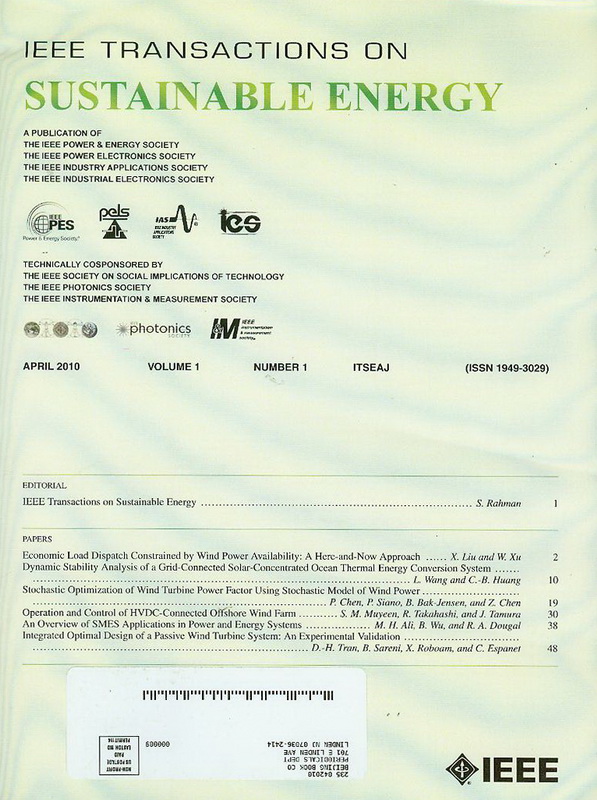复杂部分荫蔽条件下基于机器学习的光伏发电系统全局最大功率点跟踪技术
IF 10
1区 工程技术
Q1 ENERGY & FUELS
引用次数: 0
摘要
当光伏发电系统(PVGS)在部分遮荫条件下运行时,其输出功率-电压(P-V)特性曲线呈现多模态,这使得全局最大功率点(GMPP)的搜索变得复杂。提出了一种基于机器学习的GMPP跟踪(GMPPT)方法。在第一阶段,使用回归树(RT)来预测GMPP的大致位置。在第二阶段,采用α-摄动和观测(α-P&O)方法获得精确的GMPP。本研究首先建立PVGS仿真平台,生成RT所需的训练数据,然后对得到的RT进行优化并集成到仿真平台中。最后,将本文提出的方法与现有的方法进行了比较。从结果可以看出,在252种不同遮光模式(SPs)下,本文方法的平均跟踪功耗为2.13 W,平均跟踪时间为0.11秒。在252个测试SPs中,它可以正确识别244个间隔,其中精确的GMPP位于其中。实验结果表明,该方法在三种遮光模式下的跟踪精度和跟踪时间均优于现有的5种方法,证实了该方法的优越性。本文章由计算机程序翻译,如有差异,请以英文原文为准。
A Machine Learning-Based Global Maximum Power Point Tracking Technique for a Photovoltaic Generation System Under Complicated Partially Shaded Conditions
When the photovoltaic generation system (PVGS) operates under partially shaded conditions (PSC), its output power versus voltage (P-V) characteristic curve becomes multimodal, which complicates the search for the global maximum power point (GMPP). This paper proposes a GMPP tracking (GMPPT) method based on machine learning (ML). In the first stage, the regression tree (RT) is used to predict the approximate location of the GMPP. In the second stage, the α-perturb and observe (α-P&O) method is used to obtain the precise GMPP. This study first establishes a PVGS simulation platform and generates the training data required for RT, then optimizes the obtained RT and integrates it into the simulation platform. Finally, this paper compares the proposed method with the state-of-the-art approaches. It can be seen from the results that the proposed method has an average tracking power loss of 2.13 W and an average tracking time of 0.11 seconds under 252 different shading patterns (SPs). It can correctly identify 244 intervals where the exact GMPP is located among the 252 test SPs. The experimental results show that the proposed method outperforms 5 state-of-the-art approaches in terms of tracking accuracy and tracking time under three shading patterns, thus confirming its excellence.
求助全文
通过发布文献求助,成功后即可免费获取论文全文。
去求助
来源期刊

IEEE Transactions on Sustainable Energy
ENERGY & FUELS-ENGINEERING, ELECTRICAL & ELECTRONIC
CiteScore
21.40
自引率
5.70%
发文量
215
审稿时长
5 months
期刊介绍:
The IEEE Transactions on Sustainable Energy serves as a pivotal platform for sharing groundbreaking research findings on sustainable energy systems, with a focus on their seamless integration into power transmission and/or distribution grids. The journal showcases original research spanning the design, implementation, grid-integration, and control of sustainable energy technologies and systems. Additionally, the Transactions warmly welcomes manuscripts addressing the design, implementation, and evaluation of power systems influenced by sustainable energy systems and devices.
 求助内容:
求助内容: 应助结果提醒方式:
应助结果提醒方式:


